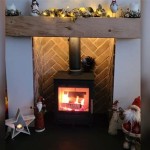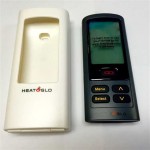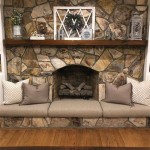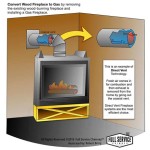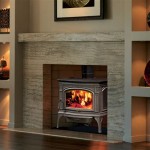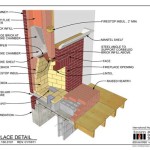Hanging Electric Fireplace Heater: A Comprehensive Guide
Hanging electric fireplace heaters offer a modern and efficient solution for supplemental heating and aesthetic enhancement in residential and commercial spaces. These units, also known as wall-mounted electric fireplaces, provide the visual appeal of a traditional fireplace without the need for venting, gas lines, or extensive construction. This article provides a detailed examination of hanging electric fireplace heaters, covering their functionality, benefits, installation considerations, design variations, and safety features.
An electric fireplace heater functions by converting electrical energy into heat using resistance heating coils or infrared heating elements. The generated heat is then circulated into the room via a fan or through natural convection. The visual flame effect is typically created using LED lights and a rotating or oscillating mechanism that projects light patterns onto a screen or a simulated log set. The combination of heating capability and realistic flame display makes these fireplaces a popular choice for adding warmth and ambiance to various environments.
Unlike traditional fireplaces that require significant structural modifications and regular maintenance, hanging electric fireplace heaters are relatively simple to install and maintain. They generally require only a standard electrical outlet and a wall mounting bracket. The operation is typically controlled via a remote control or on-unit controls, allowing for adjustments to heat output, flame brightness, and timer settings. The absence of combustion byproducts also makes them an environmentally friendly alternative to wood-burning or gas fireplaces.
Key Point 1: Functionality and Heating Capabilities
The primary function of a hanging electric fireplace heater is to provide supplemental heating. These units are not intended to replace a central heating system but rather to augment it in specific areas or during transitional seasons. The heating capacity of an electric fireplace heater is typically measured in British Thermal Units (BTUs) or watts. A standard 1500-watt electric fireplace heater can produce approximately 5,100 BTUs of heat per hour, which is sufficient to warm a room of approximately 400 square feet. However, the actual heating effectiveness depends on factors such as the room's insulation, ceiling height, and ambient temperature.
Electric fireplaces often offer adjustable heat settings, allowing users to customize the heat output according to their comfort level and the room's heating needs. Some models also feature a thermostat, which automatically regulates the heat output to maintain a consistent temperature. This feature enhances energy efficiency by preventing overheating and unnecessary energy consumption. The ability to operate the flame effect independently of the heating element is another key feature. This allows users to enjoy the visual appeal of the fireplace without generating heat, making it suitable for use year-round.
The heating technology employed in electric fireplaces varies. Resistance heating, the most common method, involves passing electricity through a coil of wire, which heats up and radiates warmth. Infrared heating, on the other hand, uses infrared lamps to directly heat objects and people in the room. Infrared heating is often perceived as more efficient and comfortable because it does not dry out the air as much as resistance heating. Some models also incorporate fan-forced heating, which uses a fan to circulate the heated air more rapidly and evenly throughout the room.
The location of the heating element and the design of the fireplace enclosure significantly impact the performance of the heater. A well-designed fireplace will distribute heat effectively without overheating the surrounding surfaces. Safety features such as overheat protection and cool-touch housings are essential to prevent accidents and ensure safe operation. Regular cleaning of the fireplace, particularly the air intake and exhaust vents, is necessary to maintain optimal heating efficiency and prevent dust buildup.
Key Point 2: Installation and Design Considerations
The installation of a hanging electric fireplace heater is generally straightforward, but it requires careful planning and attention to detail. The first step is to identify a suitable location for the fireplace. This should be a wall that is structurally sound and can support the weight of the unit. It is also important to ensure that the location is near a standard electrical outlet or that an outlet can be easily installed. The proximity of the outlet is crucial to avoid the use of extension cords, which can pose a safety hazard.
Most hanging electric fireplaces come with a mounting bracket and detailed installation instructions. The bracket is typically attached to the wall using screws and anchors. It is important to use the appropriate type of anchor for the wall material (e.g., drywall, plaster, concrete) to ensure a secure and stable installation. Once the bracket is installed, the fireplace is simply hung onto the bracket and secured in place. Some models may require additional assembly or wiring, but this is usually minimal.
Design considerations play a significant role in selecting a hanging electric fireplace. These fireplaces are available in a wide range of styles, sizes, and finishes to complement various interior design schemes. Common design elements include different flame effects, log sets, ember beds, and surround materials. Flame effects can range from realistic flickering flames to more stylized color-changing displays. Log sets can be made from molded plastic, resin, or even real wood for a more authentic look. Ember beds can be filled with glass beads, pebbles, or acrylic crystals to enhance the visual appeal.
The surround, or frame, of the fireplace can be made from various materials, including wood, metal, glass, and stone. The choice of material depends on the desired aesthetic and the overall design of the room. Modern fireplaces often feature sleek, minimalist designs with clean lines and glass fronts. Traditional fireplaces may have ornate wooden frames and detailed log sets. Corner electric fireplaces offer a space-saving solution for smaller rooms. Regardless of the design, it is important to choose a fireplace that complements the existing décor and enhances the overall ambiance of the space.
Key Point 3: Safety Features and Maintenance
Safety is a paramount concern when operating any heating appliance, and hanging electric fireplace heaters are equipped with several safety features to mitigate potential risks. Overheat protection is a standard feature that automatically shuts off the fireplace if it detects excessive heat buildup. This prevents the unit from overheating and potentially causing a fire. Cool-touch housings are designed to keep the exterior surfaces of the fireplace cool to the touch, reducing the risk of burns.
Many electric fireplaces also include a child safety lock, which prevents children from tampering with the controls or accidentally turning on the fireplace. It is essential to follow the manufacturer's instructions regarding the placement of the fireplace, ensuring that it is not obstructed by curtains, furniture, or other flammable materials. Regular inspection of the power cord and plug is also important to identify any signs of damage or wear. Damaged cords or plugs should be replaced immediately to prevent electrical hazards. It is advised not to run the power cord under carpets or rugs, as this can create a fire hazard.
Maintenance of a hanging electric fireplace heater is relatively simple, but regular cleaning is necessary to ensure optimal performance and longevity. Dust can accumulate on the heating elements and fan blades, reducing their efficiency and potentially causing overheating. The fireplace should be unplugged before cleaning. Use a soft, dry cloth to wipe down the exterior surfaces of the fireplace. The air intake and exhaust vents should be vacuumed regularly to remove dust and debris. The flame effect display may also require occasional cleaning to maintain its brightness and clarity.
The LED lights used in electric fireplaces are typically long-lasting and do not require frequent replacement. However, if a light fails, it may be necessary to replace the entire light module. Consult the manufacturer's instructions for specific guidance on replacing light modules or other components. Regular maintenance not only ensures the safe and efficient operation of the fireplace but also extends its lifespan and preserves its aesthetic appeal. By following these guidelines, users can enjoy the warmth and ambiance of their hanging electric fireplace heater for many years.

60 Inch Electric Fireplace 750 1500w Recessed Wall Mounted Remote Oneinmil

Homcom 36 Wall Mounted Electric Fireplace 750 1500w Heater With Flame Effect 7 Color Background Light And Side Black Backgrounds Aosom

Livingandhome 60 Inch Led Electric Fireplace Wall Mounted Insert Heater 9 Flame Colours

Alice 30 Electric Fireplace Inserts Recessed Wall Mounted Led Heater With 12 Flame Colors Touch Screen Remote Control Timer Logset Crystal Stones 500w 1500w Inches Com

Livingandhome 40 Inch Led Electric Fireplace Wall Mounted Insert Heater 9 Flame Colours

Lifeplus 42 1500 Watt Freestanding Wall Mounted Electric Fireplace Heater Black Com

Homcom Led Curved Glass Electric Wall Mounted Fire Place Fireplace Heater Diy At B Q

Livingandhome Brushed Effect Electric Fire Wall Mounted Or Inset Fireplace Heater 12 Flame Colors With Remote Control 60 Inch Diy At B Q

Real Flame Electric Fireplace Wall Mount

Costway 42 Electric Fireplace Wall Mounted Freestanding Heater Remote Control 1500w Target
Related Posts

